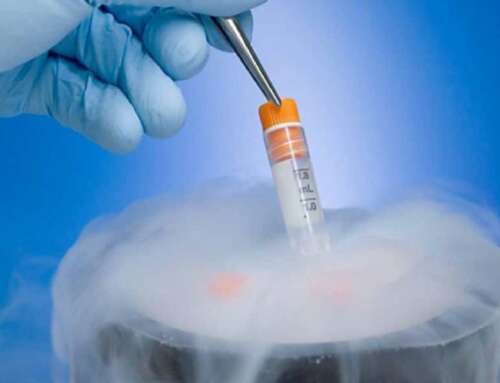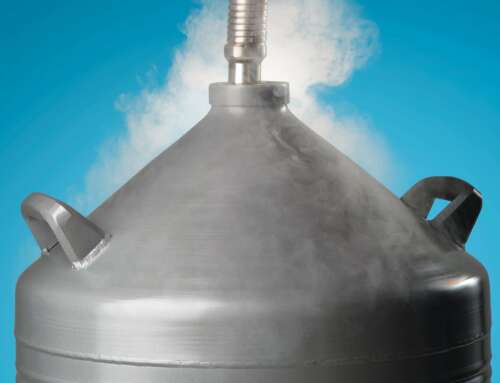Cryogenic transfer equipment is critical in many industries that rely on low-temperature processes. Whether you are working with liquid nitrogen, oxygen, argon, or other cryogenic liquids, choosing the right equipment for your needs is essential. The proper Cryogenic Transfer Hose equipment is crucial in the complex world of industrial processes that handle low temperatures. Designed with industry specialists in mind, this blog post will discuss the importance of selecting the appropriate cryogenic transfer equipment and how it can impact your operations. We will delve into the subtleties of selecting equipment, covering everything from handling goods at freezing temperatures for storage and transportation to comprehending the varied applications across multiple industries. Come along as we examine liquid nitrogen, cryogenic transfer hoses, and the critical need for safety procedures and specialized maintenance in the cryogenics industry.
Cryogens’ Essential Properties and Applications in Cryogenic Transfer Processes
Cryogenic transfer processes rely on substances called cryogens, which are liquids that can exist at extremely low temperatures. Some common cryogens are liquid nitrogen, liquid oxygen, and liquefied natural gas. The unique properties of these substances require specialized tools to handle them safely. Technifab’s Cryogenic Equipment Manufacturing is used for Cryogenic Transfer Hoses because it can withstand extremely low temperatures and keep the cryogens in their liquid state. Understanding the characteristics of each type of cryogen is crucial when selecting the appropriate equipment for industrial applications.
Used to Store and Transport at Low Temperatures
Cryogenic transfer equipment is crucial when working with materials in an industrial setting at temperatures much below freezing. The primary objective is transporting and storing items at extremely low temperatures—typically below -238 degrees Fahrenheit (-150 degrees Celsius). Equipment for cryogenic transfer has a wide range of applications in the energy, pharmaceutical, aerospace, and semiconductor sectors. Its versatility enables it to efficiently manage liquid gasses and other materials that must be transported and stored at extremely low temperatures.
Important Cryogenic Transfer Hoses for Accurate Operations
An important piece of equipment for low-temperature applications is the cryogenic transfer hose. These hoses are designed to efficiently convey cryogenic fluids while minimizing heat transfer and maximizing safety. The selection of cryogenic transfer hoses is influenced by various factors, such as the type of cryogen being handled, the required flow rate, and the specific operating conditions. In industrial settings, these hoses play a critical role in the safe and controlled circulation of cryogenic substances. Technifab’s cryogenic transfer hoses are the most thermally efficient cryogenic transfer hoses available. Their lightweight, thin-walled construction reduces cryogen losses and improves efficiency.
Vitality of Liquid Nitrogen Transfer Hose
Fluid nitrogen hoses are a specialized class of cryogenic transfer equipment designed to safely and effectively transmit liquid nitrogen. Due to its shallow boiling point, proper treatment of liquid nitrogen is necessary to avoid heat losses during the transfer process. These hoses are constructed using materials that are resistant to the harsh environments encountered in cryogenic applications. Choosing a Liquid Nitrogen Hose is crucial for maintaining the integrity of the cryogens being transferred and ensuring the safety of personnel involved in the operation.
Essential Role of Nitrogen Transfer Hose
A nitrogen transfer hose is specially designed to handle nitrogen gas, which is frequently used in various industrial processes. Nitrogen gas is a cryogenic material that requires extreme caution during its handling due to its low boiling point and extremely cold nature. To ensure a safe and effective transfer process, choosing the appropriate nitrogen transfer hose for the application is crucial. The selection of the hose significantly impacts the overall safety and stability of the cryogenic transfer process, reducing the chances of leaks and other safety hazards.
Used in A Variety of Industries
Cryogenic transfer equipment is utilized in a wide range of industries due to its versatility. For instance, the energy sector uses it to produce power from liquefied natural gas, while the medical and pharmaceutical sectors rely on it for preservation and treatment. This equipment is highly adaptable and is crucial in facilitating significant advancements and procedures across various fields, including industrial, scientific, and aerospace industries.
Safety is a Top Priority
When it comes to companies using cryogenic materials, safety comes first. The severe temperatures of cryogens present unique risks and problems that necessitate close attention to safety procedures. Selecting appropriate cryogenic transfer equipment is a crucial first step toward reducing these hazards. Robust safety measures, such as pressure release valves, leak detection systems, and long-lasting construction, are essential for protecting workers and the integrity of the products being handled. Adherence to industry standards and safety training are critical to reducing the risks of cryogenic procedures.
Specialized Maintenance and Upkeep
Cryogenic transfer equipment is quite vulnerable to damage, so regular and specialized maintenance is important. The components that work with cryogenic materials and are subjected to high temperatures should undergo careful examination and preventive maintenance to ensure their continued reliability. Proactive maintenance is necessary to maintain the equipment at peak performance and increase lifespan. This includes regular testing, inspections, and promptly replacing worn-out parts. Specialized maintenance from Technifab helps to ensure that the machinery meets safety regulations and operational requirements, reducing the likelihood of malfunctions or breakdowns during crucial industrial processes.
Conclusion
Industry professionals working with low-temperature processes need to consider the cryogenic transfer equipment they choose carefully. The complexities of cryogenic transfer hoses, liquid cryogen transfer, and safety and maintenance underscore the importance of accuracy and expertise in selecting equipment. Cryogenic transfer equipment is versatile and can be used across a range of industries to support essential procedures and breakthroughs. However, it requires unique maintenance procedures and a focus on safety measures to ensure longevity and dependability. Having a deep understanding of these factors will enable industry experts to make informed decisions that promote success, safety, and efficiency in their operations.



